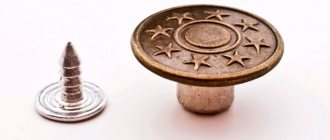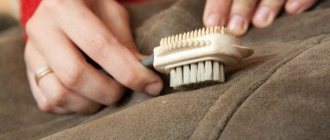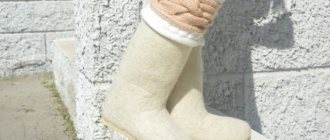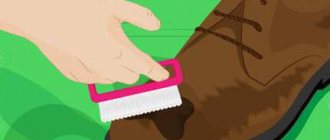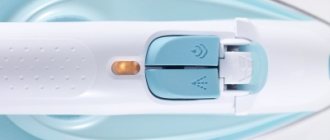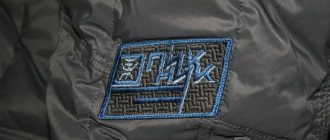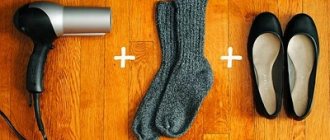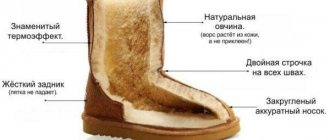When we wear shoes, they wear out and become deformed. Even expensive high-quality shoes lose their appearance when worn. Often, as a result of exposure to bad weather conditions, the tightness of shoes is lost and the soles come off. In such situations, we are faced with the question of how to choose and apply shoe glue. After all, you can repair your favorite pair yourself and wear it the next day, instead of wasting time and extra money on a trip to a shoemaker.
Fortunately, anyone can glue shoes; you don’t have to turn to a specialist. However, it is important to choose the right adhesive composition.
Types of shoe glue
All products are divided into several large groups. They are distributed according to the type of adhesive and purpose.
Professionals say that currently, adhesives are the best way to provide reliable and strong adhesion.
Depending on the purpose, the following varieties are distinguished:
- Attaching the base. Designed for attaching heels or soles. It is highly reliable and ensures strong fastening of all main elements.
- Auxiliary work. Used for connection using threads, nails, staples.
- Secondary sticking. For gluing labels and non-essential items. This does not require high joint strength.
Note! Before purchasing products, you should carefully study the instructions. It usually describes the purpose and application features. Different materials require different adhesives.
There are also universal substances. They can be used for gluing various materials without loss of quality characteristics. It is also important to take into account the durability of certain components, as well as susceptibility to external influences - humidity, temperature and other factors.
It’s difficult to say for sure which shoe glue is the best. This depends on the type of product and the specific task.
The glue is also divided according to its composition. They all have their own advantages and disadvantages. The following varieties are distinguished:
- Universal. A common type of adhesive that is used to perform a variety of tasks. Suitable for repairing minor damage or permanent connections of torn elements. It is characterized by high elasticity and resilience. However, it is not recommended to use it in areas of strong bends, as rapid breakdowns are possible, which will lead to serious damage.
- Combined. The composition may contain various components depending on the requirements of the manufacturers. It is recommended that you read the instructions first. Most often used for gluing small parts, nose parts, and insoles.
- Nairite. Does not have high strength indicators. Mainly used for gluing shoe insoles. Well suited for connecting rubber soles. Characterized by resistance to humidity and cold. Cannot be used for gluing polyurethane coatings, as this will only damage the surface.
- Polyurethane shoe adhesive. Professional composition of high quality. The advantage applies in workshops. When using, do not pour a large amount of adhesive, as it increases in size during drying. The product hardens in a matter of seconds, so it is recommended to be careful when working with it.
- Polyvinyl chloride. The composition contains resins. They make the composition flexible, which allows you to glue the bends. Does not have high quality indicators. If used properly, refurbished shoes can last for many years. Among the special properties is that the glue has good moisture resistance.
- Perchlorovinyl rubber. Not a strong adhesive. Used exclusively for connecting insoles. The composition is not stable when exposed to low temperatures or moisture. It is recommended to fix the details exclusively on summer shoes.
To choose the best shoe glue for home use, you need to take into account many indicators. You need to decide what you will use it for. This will help you make the right choice.
The right shoe adhesive will help extend its service life, as well as significantly save on contacting professional craftsmen.
Shoe repair rules
Preparation of contact areas is done in the following sequence:
- dry and clean from dirt, sand if necessary;
- degrease with alcohol (solvent, cologne) and wipe dry with a clean, dry cloth;
- apply glue in one or several layers depending on the desired strength of the seam and dry for 5–15 minutes;
- connect the surfaces with considerable force and secure with clamps or weights for a day.
The glue emits a strong odor, so the room must be ventilated.
If the adhesive composition is selected in accordance with the recommendations, then the shoes will serve no less than new ones. There is no need to skimp on the quality of the glue - the cost of purchasing it will more than pay off.
How to make your own shoe glue
If you don’t want to spoil your favorite pair of shoes with a low-quality compound, you can try making your own glue at home. This is a rather complicated process that will take time. It is also advisable to watch training materials to understand all the intricacies.
You should choose shoe glue, taking into account the composition of the material of the surfaces to be joined and the amount of work to be done.
One of the recipes for preparing an adhesive is as follows. You need to take nylon or nylon (women's hosiery is suitable for this). After this, they are sent to soak in acetic acid. It must first be cooled.
In fact, any substance containing rubber is suitable for gluing shoes. It will need to be dissolved in acid.
There is another option. It is necessary to prepare soft rubber and gasoline. The workpiece is cut into small pieces and soaked in fuel. The mixture must be left for two days. After this, the resulting mass is poured into a glass or plastic container. Stored in a dark, cool place. The finished mixture has a thick consistency that can be used for gluing shoes.
A piece of good soft rubber (raw rubber) is crushed into small pieces, which are infused for several days in clean, light so-called aviation gasoline.
In order for the composition to be of high quality, you must have sufficient experience. It is recommended to consult a specialist. If necessary, it is better to purchase ready-made glue from well-known brands.
How to remove glue from shoes
Before gluing the shoes, you need to clean them of old glue. Methods vary depending on the material, as it can be damaged.
How to remove glue from leather shoes
You can remove old glue from shoes using a special product that is sold in a specialty store. Apply the cleaner to the glue and let it soak for 10-15 minutes. Then use a soft sponge to remove the remaining substance from the shoes.
Alternatively, you can use a nail file. Using circular motions, try to brush only the adhesive to avoid damaging the skin.
How to Remove Super Glue from Suede Shoes
Suede can withstand any chemical reaction, so use ammonia or acetone to remove glue. Before cleaning, steam the area to make the surface soft. Then apply the cleaner and remove any remaining adhesive with a soft sponge.
How to remove glue from nubuck shoes
Nubuck is a substitute for suede, so the removal methods are similar. Specialized stores sell various creams and liquids for cleaning and restoring lint on shoes. Their use will protect shoes from negative reactions.
How to remove glue from fabric shoes
At home, you can use acetone, but only for undyed fabric. A safer method is to use a special tool “Contact” or “Minute”. Apply it to the remaining glue and leave for 10-15 minutes, then rinse with a damp sponge.
How to remove glue from leather shoes
Many people believe that leatherette can be treated with the same means as real leather, but this is not true. The leather substitute is more demanding, so the glue must be removed without the use of strong reagents. Make a soap solution, dampen a rag with it and apply it to the old glue in a circular motion.
How to remove glue from polished shoes
Take a pinch of table salt and fill the area with old glue. Then moisten a cotton pad with an alcohol solution and cover the salt with it for 2-3 hours. Then wipe with a soft sponge. Use mineral oil as an analogue of alcohol.
Methods for removing glue from the sole
In specialized stores you can purchase an appropriate solvent that effectively removes glue residue from labels and inserts on the sole. But there are also methods using products that everyone has in their home. For example, rubber cement can be removed effectively with an eraser, while harder substances can be cleaned with a nail file or sandpaper. Remove any remaining adhesive from the label or price tag using cologne, alcohol or acetone.
Shoes can be restored using special products or using home remedies, but you should not do this without knowing what material they are made of, as you will only worsen their condition. Follow the instructions and your shoes will look like new.
How to choose the right shoe glue
When choosing an adhesive, many parameters must be taken into account. The main ones are listed below:
- Target. First you need to decide what the glue will be used for. This could be a major overhaul or gluing of individual elements. Select which materials need to be glued together (leather, suede). If you need to perform a large amount of work, it is better to give preference to expensive brands of products that have proven themselves in the market. The results will last much longer.
If you plan to use your shoes for another season, you can purchase the substance cheaper and easier so as not to overpay.
- Types of work and materials. Before purchasing any product, you must carefully read the instructions. It usually indicates the possible scope of work to be performed, as well as the materials that are allowed to be glued. Universal adhesives are not always suitable. In some cases, they only make the problem worse.
- Characteristics. The glue must be resistant to humidity and low temperature.
Repair shoes in a well-ventilated area.
- Tube size. If you are planning a small renovation at home, it is better to buy a small package. If you store the adhesive for a long time, it will dry out quickly.
- Price and quality. The main thing is to correctly assess the price-quality ratio of the product so that the purchase does not hit the budget too much.
- Efficiency. The strength of the composition is indicated by the reliability of fastening and the service life of the product. Parts should not be deformed or come unglued immediately after pasting.
Before using the adhesive, carefully read the instructions, which tell you what materials it is suitable for.
These characteristics must be taken into account when purchasing glue for gluing shoes. The modern market provides a wide range of different products.
What to do to prevent shoes from slipping
There is one important problem with winter shoes - excessive slipping. Manufacturers are trying to solve this with ribbed surfaces and tread patterns, but sometimes these measures are not enough. Abrasives prevent slipping, and you can make them yourself.
To prevent boots or felt boots from slipping, they are covered with glue and sand is applied. The glue itself is distributed unevenly. The more chaotic the pattern, the better. If you don’t have coarse sand on hand, you can sand off the slightly dried glue with sandpaper. After this treatment, the shoes will become more comfortable, but over time the grains of sand will come off and the adhesive grain will be erased, so the treatment should be repeated.
To prevent shoes from slipping, special pads are glued to the bottom, which are sold in stores. Some craftsmen stick sandpaper itself onto the sole of felt boots or uggs. The method is good, but you cannot wear such shoes indoors - they will ruin the coating.
You can make a homemade protector from nylon stockings. They are melted above the base layer and allowed to drain in a chaotic manner. Floating drops will provide an anti-slip effect. But, as with homemade abrasives, the coating will have to be renewed periodically.
Dear readers of the Tkan.Club website, if you still have questions on this topic, we will be happy to answer them. Leave your reviews, comments, share stories if you glued the sole yourself! Your life experience may be useful to other readers.
The Best All-Purpose Shoe Adhesives
Often the composition of all adhesives is the same. However, the quality of each product is different. Below are the most common options that a home craftsman should always have on hand.
KENDA FARBEN SAR 30E
It has universal properties. Can adhere to a variety of materials. Suitable for repairing shoes made of natural or artificial leather, rubber, textiles. Characterized by fast gluing of different surfaces. The seam is durable, resistant to high humidity and low temperatures. It will take two days for the adhesive to dry. After this, you can use your shoes.
Universal adhesive for shoe and leather goods production.
Among the advantages are:
- use in professional workshops and at home;
- high efficiency and quality indicators;
- resistance to temperature changes;
- There is no unpleasant aroma when gluing.
Flaws:
- The cost of one tube is quite high.
Moment "Marathon"
Quickly glues different surfaces, so it is suitable for quickly gluing shoes. It is easy to use. The composition does not spread, as it has a gel structure. Not intended for gluing polyethylene or PVC. It is used for gluing fabric, wood, rubber and other materials from which shoes are made. Possible freezing. After this, it heats up quite quickly at room temperature without losing its quality characteristics. The packaging looks red.
Moment Marathon is a special shoe glue, perfect for repairing any types of shoes made of various materials in any combination.
Pros:
- There are different tube sizes;
- allows you to quickly repair the required product;
- economically distributed over the work surface;
- It is characterized by high strength and efficiency.
Minuses:
- unpleasant smell when gluing.
Nairit
Designed to work with a wide variety of materials. It is distinguished by high quality gluing of rubber, fabric, leather, wood. It has elasticity, so it does not break the seam. There are two ways to treat the surface. With cold pasting, it will take a day for the adhesive to dry; with hot pasting, it will take about four hours. In order to give the mixture the required viscosity, you can use additional components (gasoline, acetone).
Nairite glue is widely used in shoe workshops.
Advantages:
- contains no harmful toluene-based solvents;
- is distinguished by reliability and durability;
- used to perform various household tasks.
Flaws:
- high price.
Glue "317"
Household universal glue. They can be used to glue a variety of materials: leather, rubber, glass, synthetic substances. For example, it is used to create landscaping decorations. Available in 40 ml tubes. Among the features is that it hardens quickly.
Adhesive “317” is a quick-setting polychloroprene, universal adhesive based on neoprene or polychloroprene rubber.
Advantages:
- creates a strong connection;
- no need to wait a day for gluing;
- has a dense consistency;
- affordable price.
Flaws:
- leaves yellow marks.
Common problems with sneaker soles
In most cases, problems arise with sports shoes. With constant and intensive use, the toe of sneakers often peels off (one of the most vulnerable spots of such products).
Due to their specific features, many sneakers have a fairly soft sole. Therefore, there is a high probability of puncturing your sneakers while walking or jogging by stepping on a sharp object.
In many cases, there are also problems with the sole coming off. The recommendations below will help you deal with such situations.
How to repair shoes without glue
In this case, you can flash your shoes. It is not recommended to perform this procedure yourself. It's better to consult a specialist. Otherwise, you risk ruining your favorite pair of shoes.
The ability to operate a shoe awl is not given to everyone, but it allows you to repair shoes yourself, without turning to a shoemaker.
Choosing glue for repairing shoes at home is a rather difficult process. There are many parameters to consider. When gluing, you should strictly follow the instructions.
NOVBYTHIM “Uran” – for shoes with polyurethane soles
This glue is considered an analogue of professional Desmokol and is best suited for repairing shoes with polyurethane soles.
Like other PU adhesives, it needs thermal activation, otherwise the gluing will not be as durable. However, the cold method in this case also turns out to be quite effective.
Pros:
- Suitable for repairing demi-season shoes, as it does not get wet under the influence of water;
- High elasticity of the adhesive layer prevents the shoes from deforming;
- There are two gluing methods available - hot and cold;
- A huge selection of packaging - from 50 ml tubes to 200 liter barrels;
- Long shelf life (2 years).
Minuses:
- Fire hazardous and toxic.
Which glue is better not to use?
The range of adhesive compositions goes far beyond the scope of the listed products and some of them can also cope with the task. In order not to confuse you, we decided to indicate which adhesives should absolutely not be used, since they either will not provide sufficient strength or will further damage the pair being repaired.
- PVA glue
is not waterproof, so the shoe will fall apart after the first puddle. - Superglue (Moment glue, Second glue, etc.)
assumes a rigid connection, and the sole and material of the shoe are deformed when walking. The material simply cannot cope with such a load. - , adhesive for ceiling tiles
copes with the repair of leather, textile and rubber products, but leaves stains on them that cannot be removed.
MOMENT “Marathon” - affordable glue for home use
This popular glue is universal. In this case, the manufacturer means that with the help of “Marathon” you can repair shoes with any combination of materials – even with a wooden (cork) sole.
After drying, the composition retains some elasticity, which is important for connecting flexible parts of shoes. It is sold in small tubes of 30 or 125 ml.
Pros:
- Waterproof;
- Has a wide temperature range – from -40 to +110 °C;
- Does not lose its properties when refrigerated during storage;
- Residues of fresh glue can be easily removed from the top of the shoe;
- A tube with a long spout is convenient when you need to pour glue into a narrow gap;
- The cap does not stick tightly to the tube;
- Shelf life is 2 years versus 1-1.5 for professional adhesives.
Minuses:
- Requires adherence to technology (cleaning, degreasing), otherwise the torn part of the shoe will have to be glued again and again.

